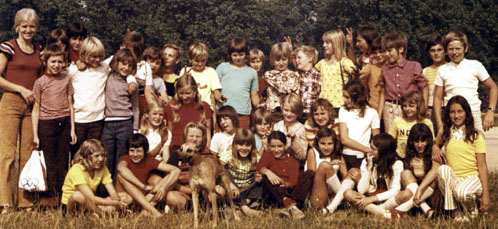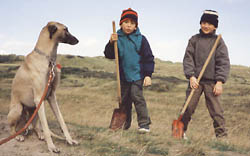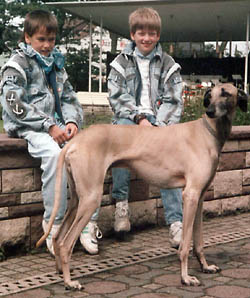Dogs and Children

As a teacher I was always very happy, when the topic “domestic animals” lined up in the Biology Classes, because these have always been the nicest lessons.
The children were allowed to bring their own domestic animals. They presented them and held a short paper over them on the basis of some different criteria. The pupils could observe the animals up to the break and were sad when the school-bell rang so early.
During the break the animals left the school by the parents again.
All pupils were concentrated “with the thing” and did much learn, what remained in their mind for a life long, I am sure!
Everybody worked disciplined and admonished mutually, if someone showed times fewer interests. Everyone wanted to be quiet, also in order to make for the animals no fear. If it rang for the break, I often heard: “Oh, it harms that the lesson is already over!” Afterwards the children inquired, who may present next his animal. These hours worked by themselves at school. For me this interest was the most beautiful wages! And we had also mastered a large quantity instruction of material.
From these experiences I will dedicate to a chapter , in which I quote likewise some statements from scientists to it to the domestic animal attitude in my thesis:

“Straight lines of children are able to manufacture a particularly close relationship with animals, because animals are important partners for children. For this reason the domestic animal attitude is absolutely to be integrated into the educational process of children. The contact to animals is used by today's humans, in order despite civilization and mechanization to nature back to find (s. Humane Education, Resource Guide). Children and young people are to be made familiar in the sense of the Humane Education at the coining/shaping age with animals, so that the knowledge is arranged for them that each life is valuable and must with respect to be treated.” (s. Miekeley, M.: Domestic Animal Attitude and Instruction Models, Münster/New York 1995, p. 9)
Animals – completely particularly dogs – help to socialize children because they train handling organisms, in order responsibly with them to deal. Thus dogs are considerably involved also during the personality development by children and affect children positively.
As long as children are however small, is the most important question for parents, who would like themselves to purchase a dog: “Can our children probably get along with the dog?” This question I am answering as a mother likewise (s. in addition the following reports on my sighthounds).

There may develop a great passion between children and dogs. Then both partners complement and support each other, and so it is to be! Children profit a mass, in addition, dogs of children. Over the possibilities of an educating assistance by dogs/and/or animals lots of research and psychological projects run at universities, which are occupied with the “Pet facilitated Therapy”.
Also, the Psychologist and Saluki-Breeder, Dr. Helga Renfordt-Voelkner (the Al-Safi Saluki Kennel), uses her Saluki-Bitches for the therapy of psychologically ill children (see Therapy Dogs). This sensitive dogs are very much appropriate for this responsible assignment.
However adults also have the obligation to provide a protection-area of the dogs. Children must learn, what they are allowed to do and what not. Thus borders are pointed out to them, so they can later take over responsibility for other animals. These experiences can also pass for human fellows. That means in addition, that children ought to know and to learn the rights of a dog. They have to accept the rules how to handle dogs and other animals. Dogs should get their assigned place in the hierarchy of the family. Like that, the dog will certainly be a fully integrated and reliable family member.
All texts and images, except otherwise noted, copyright © Dr. Margrit Miekeley
